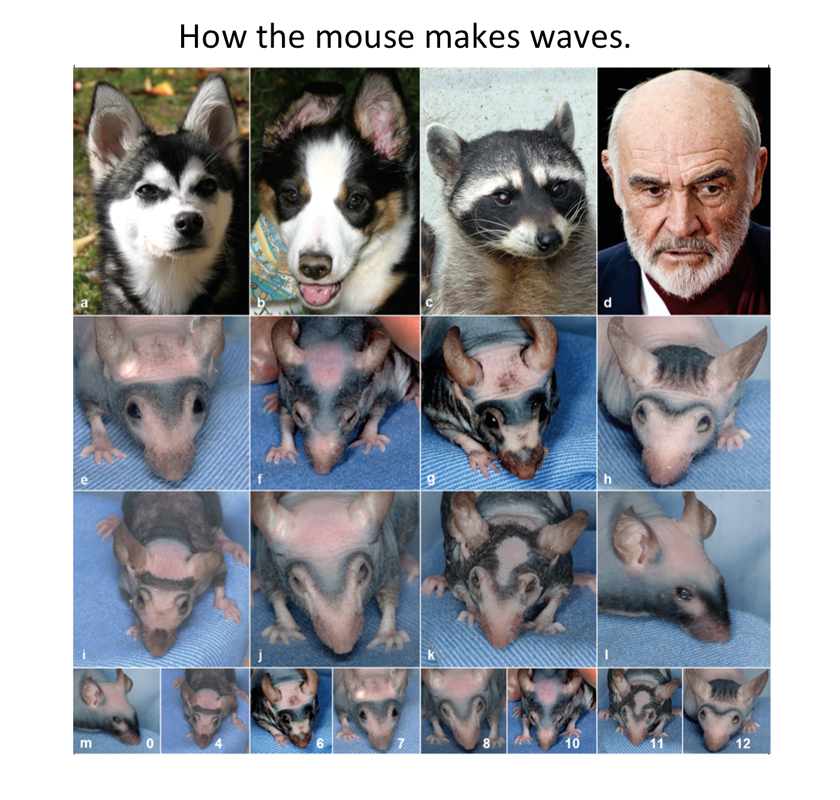| Facial pigmentation of a single Foxn1tw mutant individual (m), showing its traveling wave (dark zone) of hair formation at different times over a 12-week period (numbers = weeks). These eight frames (≈ the rock group Kiss) are enlarged above as l i g e j f k and h. Some of the transient wave forms resemble static pigment patterns in dogs (a ≈ e; b ≈ f), raccoons (c ≈ g), or humans (d ≈ h). The path of the wave may be constrained by the polarity of the epidermal cells. The black mask of the raccoon (c) is thought to be an aposematic warning signal. Scottish actor Sir Sean Connery (d) is included because of his prominent eyebrows, not for having a unibrow per se. This photo was taken by Stuart Crawford at the 2008 Edinburgh International Film Festival. Panels a-d are from public domain websites. Panels e-l (= m) along with their temporal data were furnished by Shigeru Kondo and are used with permission. It was Shigeru's idea to compare these zones to dogs and humans. If he is right that some animal patterns evolved by freezing these waves in transit (co-option), then they could be considered spandrels. |
|
leopard | cheetah compared with butterfly | anglefish | zebra | mouse cloud leopard | giraffe | ant | beetle | treehopper stalk-eyed fly | ladybird | snake | The Interactive Fly resides on the web server of the Society for Developmental Biology. |


